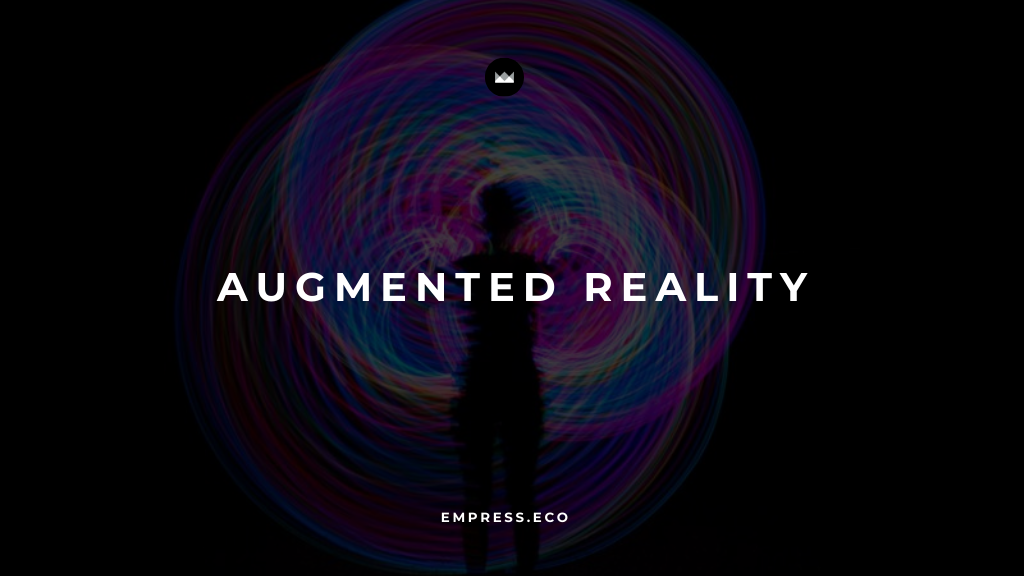
Designing for Tomorrow: The Role of Augmented Reality in Brand Experiences
Explore how augmented reality is transforming brand experiences and driving customer engagement.
Table of Contents
Augmented reality (AR) is no longer just a futuristic concept—it's a powerful tool that’s already reshaping the way brands engage with their customers. As we delve into 2024, AR is proving to be a game-changer in the design and branding world, offering innovative ways to create immersive interactions that captivate and convert. In this blog, we’ll explore how AR is revolutionizing brand experiences, backed by real-world examples and practical insights into how you can leverage this technology for your business.
The Impact of Augmented Reality on Brand Experiences
AR is revolutionizing the way brands interact with their audiences, bringing digital elements into the physical world in ways that were once unimaginable. Here’s how AR is making its mark:
Enhancing Customer Engagement
One of the most significant impacts of AR is its ability to transform passive observers into active participants. By integrating digital elements into the physical world, AR creates a more interactive and engaging experience. Whether it’s through an AR app that lets customers visualize a product in their home or an interactive AR advertisement that comes to life when viewed through a smartphone, the possibilities for enhancing customer engagement are endless.
This technology doesn't just capture attention—it holds it. AR experiences are memorable because they’re immersive, allowing customers to interact with your brand in a way that feels personal and meaningful. This level of engagement can lead to stronger brand loyalty and increased customer satisfaction.
Facilitating Product Visualization
Have you ever hesitated to buy something online because you weren’t sure how it would look in your space or if it would fit just right? AR solves this problem by allowing customers to visualize products in their real-world environment before making a purchase.
For example, a customer shopping for furniture can use an AR app to place a virtual sofa in their living room. They can move it around, see how it fits with their existing decor, and even change its color to match their preferences. This capability reduces the uncertainty that often accompanies online shopping, increasing customer confidence and leading to higher conversion rates.
Creating Interactive Experiences
AR isn’t just about visualization; it’s about creating fully interactive experiences that captivate and delight your audience. From virtual try-ons for fashion items to immersive storytelling campaigns, AR allows brands to create experiences that are not only fun but also highly engaging.
These interactive experiences can be used in various ways, such as gamified marketing campaigns, where customers can “hunt” for AR elements in the real world or participate in an AR-driven scavenger hunt. The interactivity of AR can make the brand experience more memorable, encouraging repeat engagement and fostering a deeper connection with the brand.
Differentiating Brands
In today’s crowded market, standing out is more challenging than ever. AR offers a unique way to differentiate your brand by providing experiences that your competitors might not be offering. Whether it's through an innovative AR app, a unique AR advertising campaign, or AR-enhanced in-store experiences, brands can leverage this technology to highlight their unique value propositions.
By offering something that feels novel and advanced, AR can position your brand as a leader in innovation. This not only attracts tech-savvy consumers but also sets your brand apart as forward-thinking and customer-centric.
Optimizing Customer Service
AR isn't just useful for pre-purchase interactions; it’s also transforming customer service. Imagine a customer trying to troubleshoot a problem with a new gadget. Instead of calling customer support and trying to follow verbal instructions, they could use an AR app that visually guides them through the process, step by step.
This application of AR can significantly improve customer satisfaction by making it easier for customers to solve problems on their own. It also reduces the need for returns and exchanges, as customers can ensure they’re using or assembling products correctly the first time.
Real-World Case Studies and Examples
AR is not just a theoretical tool; it's being used by leading brands around the world to enhance customer experiences and drive sales. Here are a few examples of how companies are successfully integrating AR into their brand strategies:
IKEA Place
IKEA has long been a leader in innovative retail strategies, and their AR app, IKEA Place, is a prime example of this. The app allows customers to place virtual furniture in their homes, helping them visualize how a piece will look and fit in their space. This not only enhances the shopping experience but also reduces the likelihood of returns, as customers can make more informed decisions before purchasing.
Gucci AR Shoe Try-On
Gucci is another brand that has embraced AR to enhance the customer experience. Their AR feature allows customers to virtually try on sneakers, providing a realistic view of how the shoes will look on their feet. This feature has been particularly effective in boosting online sales, as it removes the uncertainty associated with buying shoes without trying them on.
BMW i Visualizer
BMW’s AR app, the BMW i Visualizer, takes car customization to the next level. The app allows customers to customize and view virtual car models in their own environment. Whether a customer is sitting in their driveway or at a local park, they can use the app to see what their dream car would look like in real life. This interactive experience not only builds excitement but also strengthens the emotional connection between the customer and the brand.
Strategic Implementation of AR in Brand Experiences
Successfully integrating AR into your brand strategy requires more than just adopting the technology; it’s about using it in a way that adds genuine value to the customer experience. Here are some strategies to consider:
Focus on Value Addition
It’s easy to get caught up in the novelty of AR, but the key to successful implementation is ensuring that it adds real value to the customer journey. AR experiences should enhance your brand message and improve the overall experience, rather than serving as mere gimmicks. For example, if you’re using AR in an app, make sure it helps solve a problem or enhances the shopping experience in a meaningful way.
Leverage AR for Storytelling
AR offers a unique opportunity to create immersive narratives that engage customers on a deeper level. Whether it’s an AR-enhanced brand video that tells your company’s story or an AR app that brings a product’s history to life, storytelling through AR can foster emotional connections with your brand. This approach can be particularly effective in industries like fashion, where brand heritage and storytelling are integral to the customer experience.
Utilize AR for Personalization
Personalization is a powerful tool in any marketing strategy, and AR takes it to the next level. By enabling real-time customization of products, AR allows customers to create one-of-a-kind items that reflect their personal tastes and preferences. This not only enhances the customer experience but also opens up new revenue channels, as customers are often willing to pay a premium for personalized products.
Overcoming Challenges and Considerations in AR Implementation
While the potential of AR is vast, integrating it into your brand strategy comes with challenges. Here are some considerations to keep in mind:
Technical Barriers
Implementing AR requires significant technical expertise, particularly in areas like app development and 3D modeling. It’s important to partner with experienced developers who understand the nuances of AR technology and can help you create a seamless, user-friendly experience.
Cost
Developing AR experiences can be costly, especially if you’re creating custom applications or intricate 3D models. However, the investment can pay off if the AR experience is well-executed and adds significant value to the customer experience. Consider starting with smaller, more manageable AR projects to gauge customer interest before scaling up.
User Adoption
Not all customers are familiar with AR technology, and some may be hesitant to use it. It’s important to provide clear instructions and demonstrations to help users understand how to interact with your AR experiences. Additionally, make sure the AR application is intuitive and easy to use, so customers can quickly see the benefits.
The Future of AR in Brand Experiences
As AR technology continues to evolve, its potential applications in brand experiences will only grow. We’re likely to see more brands using AR to create personalized, immersive experiences that blur the lines between the digital and physical worlds. From virtual stores to interactive product packaging, the possibilities are endless.
One of the most exciting future developments is the potential for AR to be integrated into wearable technology, such as smart glasses. This could make AR experiences even more seamless and integrated into daily life, providing brands with new ways to engage with customers on the go.
Conclusion: The Time to Embrace AR is Now
Augmented reality is no longer just a trend; it’s a powerful tool that’s here to stay. By strategically implementing AR, brands can create more engaging, personalized, and memorable experiences for their customers. Whether it’s enhancing product visualization, creating interactive campaigns, or providing innovative customer service solutions, the opportunities for using AR are vast.
As we move further into the digital age, the brands that will thrive are those that embrace new technologies like AR and use them to their full potential. If you’re ready to take your brand experiences to the next level, now is the time to start exploring how augmented reality can help you stand out in a crowded market.
Call to Action: Ready to transform your brand experiences with augmented reality? Contact us today to learn how we can help you create immersive, engaging AR experiences that captivate your audience and drive results.
Empress Newsletter
Join the newsletter to receive the latest updates in your inbox.



